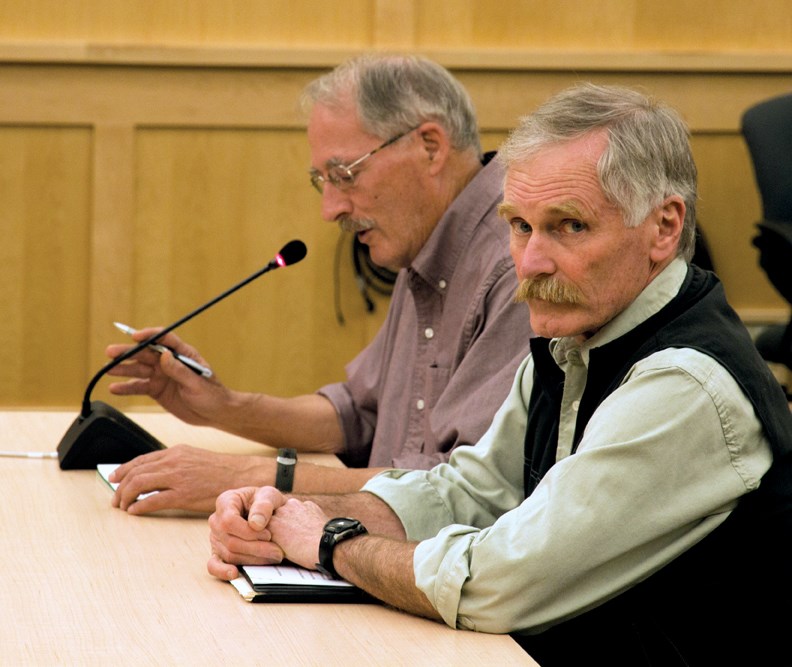The Sunshine Coast Regional District (SCRD) board of directors voted five to one in favour of the drought mitigation options recommended by the infrastructure services committee during their board meeting on Sept. 10.
Electoral areas A through F and District of Sechelt voted. Town of Gibsons was not included in the vote and the Sechelt Indian Government District (SIGD) was not present at the meeting. Area E (Elphinstone) director Lorne Lewis was opposed to recommendation one, which was to deepen the channel at Chapman Lake.
“I’m opposed because it isn’t good science,” Lewis said. “The lake is an ecosystem and the quality and quantity of the water that we get depends on that ecosystem functioning. That’s why I still am opposed – and will remain opposed – to drawing down the lake.”
Delegates George Smith and Dan Bouman from the Sunshine Coast Conservation Association (SCCA) addressed the SCRD board of directors with their concerns regarding the draw down options for Chapman Lake.
“Please maintain the ecological integrity and water quality of Chapman Lake and Tetrahedron Park as much as is possible,” Smith said. “Installing an emergency siphon mechanism while we improve our water supply system is one thing. But drawing down Chapman Lake an additional five metres by trenching or by introducing a fossil fuel pump system into the heart of our water supply are different matters entirely.”
Smith stated concerns that deepening the channel between Chapman Lake and Chapman Creek will become a regularly used fixture for the Chapman watershed. He cautioned that drawing too much water from the lake would lead to diminution of water quality and have serious environmental impacts for the area in Tetrahedron Park.
Smith cited a survey from 2009 on the sustainability of rain harvesting on the Sunshine Coast and asked that directors look at diversifying water sources, starting with nearby aquifers.
“Please examine in detail the potential of aquifer supply in Elphinstone, West Howe Sound, in Wilson and Gray Creeks, and other areas in the SCRD,” Smith said.
The survey is available on the SCRD and SCCA websites.
Discussion on the recommendations from the infrastructure services committee on Sept. 3 regarding drought mitigation options followed the delegations.
Recommendation one states that “the SCRD move forward with the design and approval process for the deepen channel option, recognizing that the system will only be utilized during periods of drought.”
District of Sechelt director Bruce Milne said he supports recommendation one, but only – as it is stated in the recommendation – under extreme drought conditions in stage four.
“Just because it’s built doesn’t mean it will be used to draw down the lake,” Milne said. “It was a very reluctant but practical decision of the board, done precisely because we expect emergencies and we want to be prepared for emergencies over the next three to four years before we have something else in place.”
Recommendation two, regarding secondary water sources, states that “the timeline in the Com-prehensive Regional Water Plan be expedited regarding long term water supply sources including the following: engineered lake, aquifers and Sakinaw Lake.”
All directors – excluding the Town of Gibsons and SIGD – voted unanimously in favour of adopting recommendation two, while only Lewis was opposed to recommendation one.



